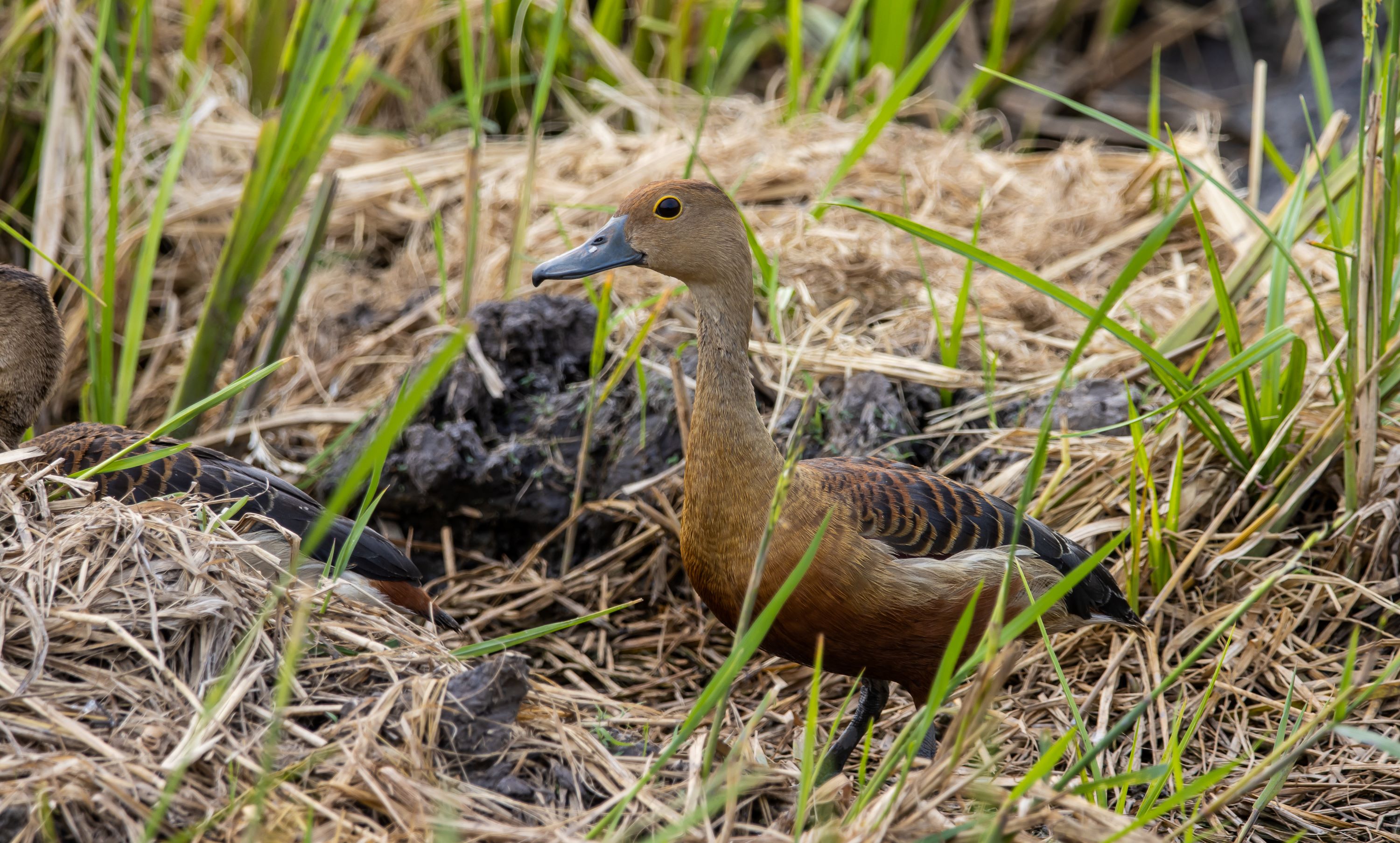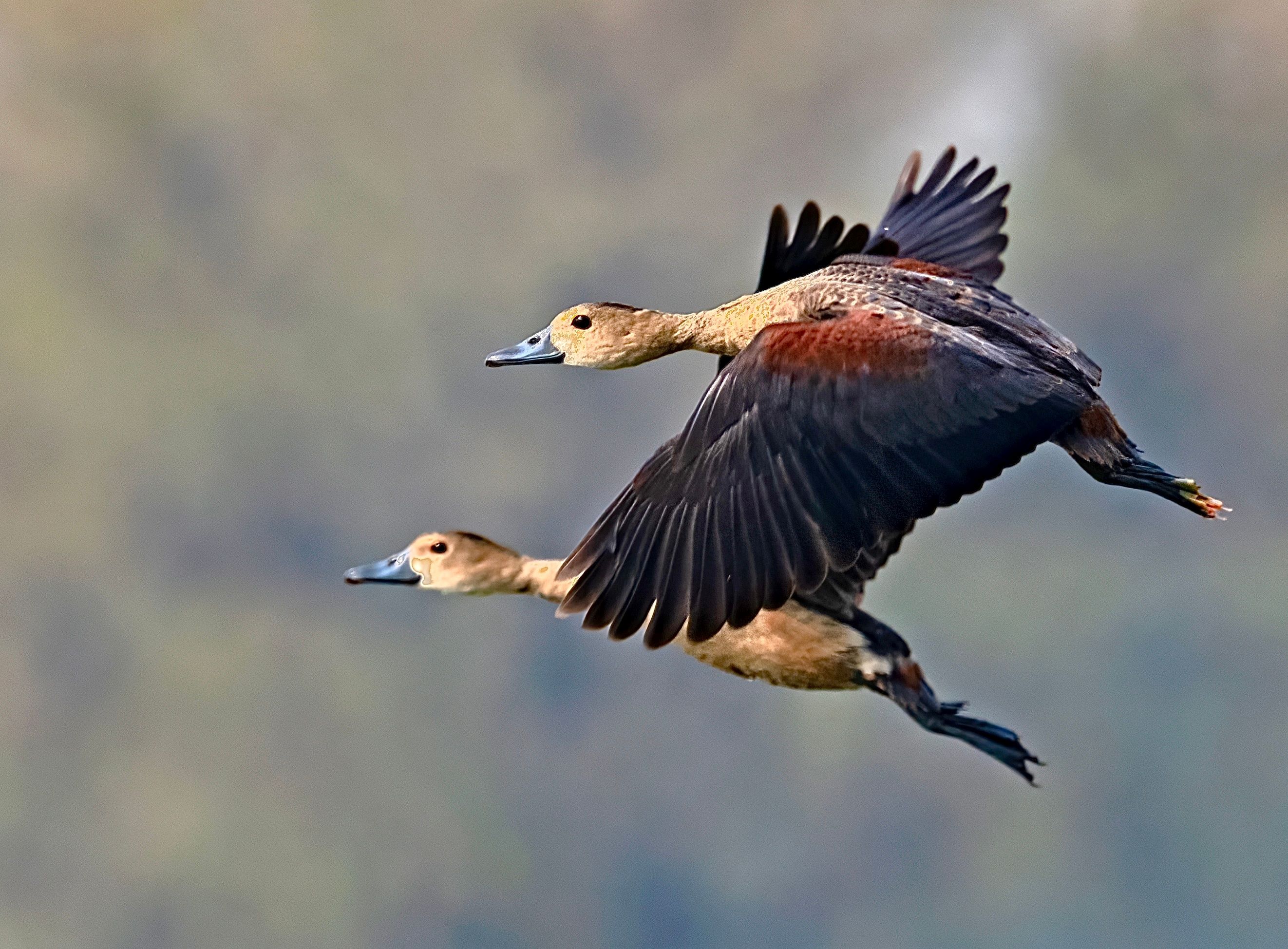
The Lesser Whistling Duck: A Distinctive Bird of the Tropics
Introduction
The Lesser Whistling Duck (Dendrocygna javanica), also known as the Indian Whistling Duck or Lesser Whistling Teal, is a captivating species within the waterfowl community. Though it is not found in Utah or North America, this species holds a unique place in the global tapestry of birdlife, particularly renowned for its distinctive whistling call and tropical habitat preferences.
Description and Identification
The Lesser Whistling Duck is a small to medium-sized duck, notable for its long neck and legs, and a short, dark bill. They possess a rich brown plumage, with a distinctive chestnut rump and chest. Their wings have greenish flight feathers, which are visible in flight, complemented by a bright yellow underwing. One of their most charming features is their whistling calls, a series of high-pitched notes that can be heard during their flight and nocturnal activities.
Habitat and Range
Native to South Asia and Southeast Asia, these ducks favor warm, tropical environments. They are commonly found in freshwater wetlands, marshes, paddy fields, and swamps. These habitats provide them with ample food sources and shelter, making them integral components of their respective ecosystems.

Behavior and Social Structure
Lesser Whistling Ducks are highly social birds, often found in flocks, especially outside the breeding season. They are known for their crepuscular and nocturnal activities, where their whistling calls become a common and characteristic sound of their habitats. During the day, they can often be seen resting in groups along the banks of water bodies.
Diet and Foraging
Their diet primarily consists of aquatic plants, seeds, and small invertebrates, which they forage both in water and on land. They are known to feed in shallow waters, dabbling around vegetation, and can also feed on land, especially in areas like rice fields, which offer an abundant food source.
Breeding and Nesting
The breeding season of the Lesser Whistling Duck varies depending on the region but usually coincides with the rainy season, when water levels are high. They nest in a variety of places, often in natural cavities or old nests of other birds, close to water. The female typically lays 6-12 eggs, and both parents take part in rearing the young.
Conservation Status
Currently, the Lesser Whistling Duck is classified as a species of Least Concern by the IUCN. However, they face threats from habitat loss due to wetland drainage, pollution, and changes in agricultural practices. Conservation efforts are essential to protect their natural habitats and ensure the sustainability of their populations.
Global Significance and Birdwatching
Though the Lesser Whistling Duck is not present in Utah, its existence highlights the rich biodiversity of tropical wetlands. For birdwatchers and nature enthusiasts in Utah, understanding the life of this species expands the knowledge of global bird diversity and the importance of conserving wetland habitats worldwide.
Conclusion
The Lesser Whistling Duck, with its distinct whistling calls and preference for tropical wetlands, is a fascinating species that contributes to the biodiversity of its native regions. Its behavior, diet, and breeding habits offer insight into the adaptation of waterfowl to tropical environments. For the global birdwatching community, including those in Utah, the Lesser Whistling Duck serves as a reminder of the diverse array of waterfowl that inhabit our planet and the need to protect the ecosystems that sustain them.